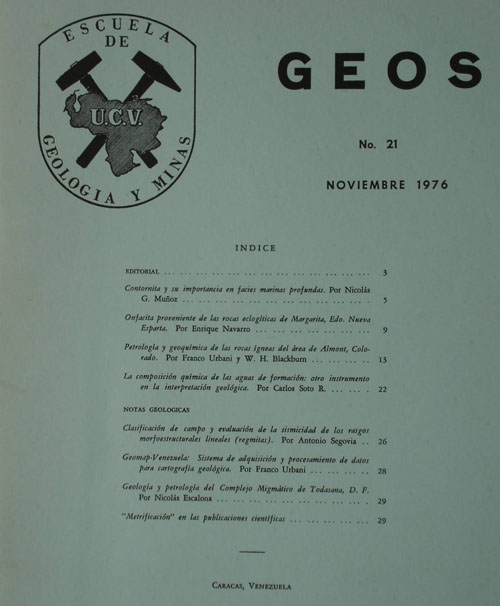La composición química de las aguas de formación: otro instrumento en la interpretación geológica
Resumen
Es posible que el análisis de Ia composlción quím1ca del agua de formación se convierta en un nuevo instrumento para Ia interpretación de Ia historia geológica de las cuencas sedimentarias. Su utilización como e!emento de juicio adicional en Ia solución de problemas geológicos no ha sido muy difundida. En este trabajo se ofrece una metodología a seguir para poder cumplir con este objetivo.
ABSTRACT
The water that accompanies the rocks in the deep basins has never been a motive really studied by the geologist that are interested in investing the geological history of the sedimentary basins. Several are the parameters that are used in these studies: the fossils, the litology, the structures, types of sedimentations, electric logs, geophisical methods, etc. These instruments are important, but other instruments are also necessary.
The results to obtain the chemical analysis of several analysis of water to permit estability there are two systems of classification. The Stiff diagram differs with 4 types of water: X, Y, Z and V and the Sulin diagram is classified accordingly to its origin in: connatas (X, Y, V) and meteorics (Z) . At the same time this is subdivided accordingly to its ionic composition. It is possible that the analysis of the chemical composition of the formation waters will be a new instrument used for the interpretation of the geological history of the sedimentary basins.

